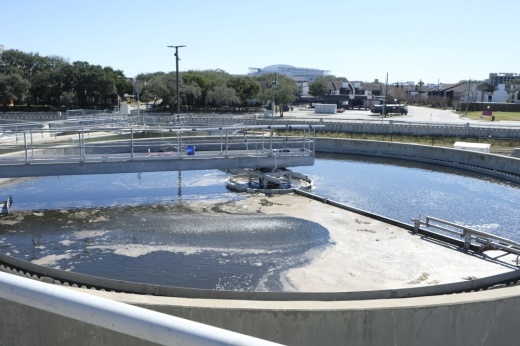In 2017, flooding from Hurricane Harvey across the Houston area caused residual damage, leading residents and government officials to reexamine anti-flooding measures throughout the city.
Since then, a series of well-known projects has been undertaken to reduce flood water build-up, including the Harris County Flood Control District’s Project Brays, where recent work has involved elevating and widening bridges across Brays Bayou.
Less well known are the hyperlocal measures taken to reduce damage and quicken recovery following a flood event. Among those projects is the upcoming effort in West University Place to make improvements to the city’s wastewater treatment plant, located at 2801 N. Braeswood Blvd., Houston.
That effort kicked off with a master plan for the treatment plant produced by Kimley-Horn, an engineering firm contracted by the city, in April 2020. In October 2021, Kimley-Horn presented the Council with the Capital Improvement Plan, which identified roughly $12 million in probable costs for the recommended improvements, including electrical service improvements and equipment replacement.
At a Feb. 14 city council meeting, council members approved a $1.2 million contract with Kimley-Horn for design services to produce a detailed plan for how the city can make the recommended improvements. The design process is expected to take one year and include multiple council workshops.
The plant’s purpose is to process and treat the water that goes through the city to ensure it meets regulations before delivering it back into the Brays Bayou, said Gerardo Barrera, West University Place’s director of public works.
During Harvey, the plant became flooded nearly to the point of critical failure. The motor control center, which controls many of the site’s critical functions, had floodwaters reach its base, according to reports from the city’s public works department.
Had waters been any higher, the plant could have been out of commission potentially for months, leading to not just inconveniences for the public, but also severe health hazards, Barrera said.
“The sewage has nowhere to go, so it can be out in the streets with the floodwater,” he said.
The current wastewater treatment plant was built in 1982. While additions have been made for ease of function within the plant, this will be the first major update to the overall design in 40 years, Barrera said.
One of the most important upgrades is the relocation of the motor control center to a more elevated location, Barrera said. Additionally, the fan blowers, which move water around the plant, will be replaced by blowers with fine bubble diffusers and variable fan drives, which may reduce energy consumption, he said.
“Right now they’re either on or they’re off, full blast or none,” Barrera said. “Variable fan drives can speed up or slow down and can gauge to be more energy efficient.”
The treatment plant is one of the largest power consumers in the city, according to City Manager Dave Beach. Some improvements could also help save energy, Barrera said, including the replacement of Archimedes screw pumps, which lift water flowing through the plant and have to constantly be moving to raise water.





